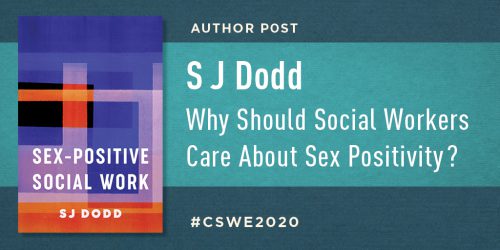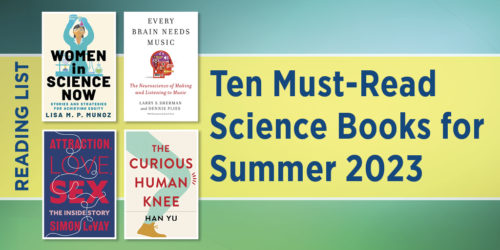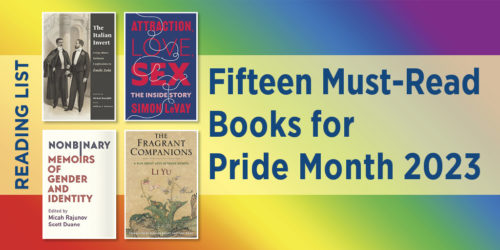Q&A: Simon LeVay on Attraction, Love, Sex

Why do we have sex? Why do we fall in love? What attracts us to one another? And how do we compare to other species in the animal kingdom? Researchers have been trying to answer these questions for years, and Simon LeVay’s book Attraction, Love, Sex: The Inside Story sets out to share some these discoveries in an engaging and easy-to-understand way.
Q: Hi Simon, thanks for talking to us today. We’d like to start by getting to the heart of the type of book this is.
Simon LeVay: It’s book about eleven different aspects of sex viewed from a scientific perspective. Eleven sexual mysteries, you might say. For example, the first chapter is about the question “Why have sex?”
Q: Why humans have sex is a mystery?
LeVay: Very much so. One research group asked their students why they had sex, and the students gave 237 different answers. Another group put the same question to the hunter-gatherers of Africa’s Congo rainforest, and they all gave the same answer—an answer that none of the Americans came up with. Who’s right? To find the answer, I delve into the sexual (or asexual) habits of yeast, rotifers, snails, crayfish, lizards, bonobos—and humans.
Q: Why would you look at nonhuman animals to find out why we have sex?
LeVay: We didn’t invent sex; it’s something we inherited from the species that preceded us over evolutionary time. That’s even true for recreational sex—sex that has nothing to do with making babies. The motivation to have sex comes from deep in our brains—from regions that we have no conscious access to.
Much of this circuitry is similar between us and other animals, but other animals are easier to study, for two reasons. First, nonhuman animals don’t construct layers of psychological complexity on top of those basic urges—those 237 reasons for sex that the students gave. And second, we can study animals in ways we can’t with humans. For example, it’s possible to genetically modify mice in such a way that particular regions of the brain can be switched on or off simply by shining a certain wavelength of light on the brain. By doing so we can control the mouse’s sexual behavior, which tells us what role that particular brain region plays in sex.
Q: I see that the final chapter of the book is about love. Is love just for humans, or do other animals fall in love too?
LeVay: Well, romantic love in humans has three components: passion, intimacy, and commitment. Some other animals form pair bonds, which correspond mainly to the intimacy component of human romantic love. Prairie voles are the best-studied species.
Q: What are prairie voles, and how do we know so much about them?
LeVay: They’re small rodents, sort of like fat mice, but more adorable. They live in Illinois, the Prairie State, appropriately enough. The zoologist Lowell Getz of the University of Illinois led a team that trapped 236,700 voles — some of them prairie voles and some of them another vole, the meadow vole. Getz’s team trapped and tagged and released these voles over a period of twenty-five years. Sometimes they found more than one vole in a single trap. If they found a male and female prairie vole together in a trap, they often found the same pair together again weeks or months later, but if they found a male and female meadow vole together, they never found the same two voles together again. This was the big discovery: prairie voles form stable pair bonds, but meadow voles don’t. The reason must have to do with some slight biological differences between the species.
Q: Did we discover what the biological differences are between prairie voles and meadow voles and what that has to do with humans’ ability to love?
LeVay: Yes. One of Getz’s assistants, Sue Carter, began the process of identifying those differences—differences in genes, in hormones, in brain organization. That’s what the first part of the final chapter is about. Then it goes on to ask, What is love in humans? Are we just pimped-up prairie voles? The answer isn’t completely clear yet, but the underlying biological mechanisms seem to be similar between them and us.
One interesting fact about prairie voles is that a few of them—mostly males—don’t form pair bonds but wander around mating with females whose partners are out running errands. I call them cable repair voles because they’re like the cable repair guys in 1990s porno videos: the husband’s off at work, the wife is bored at home—it’s very sexist—and you know the kind of thing that happens. Anyway, those promiscuous voles have a particular variant of a gene that makes them less sensitive to oxytocin, a signaling molecule that plays a role in pair bonding. Something similar has been reported in humans. Why some females are willing to mate with the promiscuous males is another mystery.
Q: Can you tell us a little about the other chapters of the book?
LeVay: They’re titled “Attraction,” “Arousal,” “Orientation,” “Having Sex,” “Relationships,” “Kinks,” “Pedophilia,” “Porn,” and “Rape.” That’s why I put love at the end—I didn’t want to end the book with a chapter on rape, even though that’s a necessary topic to cover.
Research into sexual attraction is interesting because it shows how part of attraction is hard-wired and part is more flexible. For example, there are a couple of studies in which investigators waylaid male students who were either entering their dining hall and therefore likely to be hungry or leaving it and likely to be full.
The students were asked to rate the attractiveness of pictures of women who varied in body mass index. All the students gave low ratings to women who had very low BMIs—who were very skinny. That’s probably hard-wired by evolution because very thin women have difficulty carrying a pregnancy to term, so it’s less reproductive advantageous to mate with them. But for the women with high BMIs—those who were overweight or even obese—the hungry students rated these women much more highly that did the full students. And the same effect has been seen in cross-cultural studies: men living in countries where food supplies are limited rate high-BMI women more highly than do men in affluent countries, but if they move to an affluent country they soon change their preferences. So there’s a flexibility in this aspect of attractiveness.
Then there are interesting studies in which women sniff tee-shirts worn by men. And so-called Big Data studies in which researchers look at millions of messages on dating websites to see how preferences change or don’t change over the life course. And lots of studies on which sex or sexes we’re attracted to: our sexual orientation. Many psychological studies ignore that—like in the dining hall studies I just mentioned, it’s just assumed that everyone is heterosexual, but of course that’s not true. So sexual orientation gets a chapter to itself.
Q: Do you have any interesting anecdotes from your own life? I understand you met your husband on The Oprah Winfrey Show.
LeVay: That’s true, and I’m very grateful to Oprah for that, but it’s not in the book. The one anecdote about me that’s in the book is in the chapter on kinks. I recount how once a guy demanded money—with menaces—for sexual services that I thought had been provided pro bono. Some men are really turned on by that kind of experience—it’s a kink called chrematistophilia. I wasn’t; I was very much turned off. So I don’t have that particular kink.
Q: What’s is the message people should take away from the book?
LeVay: The book’s overall message is that sex is a collection of mysteries that lie at the heart of who we are, and some of those mysteries are in the process of being solved, which could make sex even better for all of us, but especially for people with sexual difficulties.




